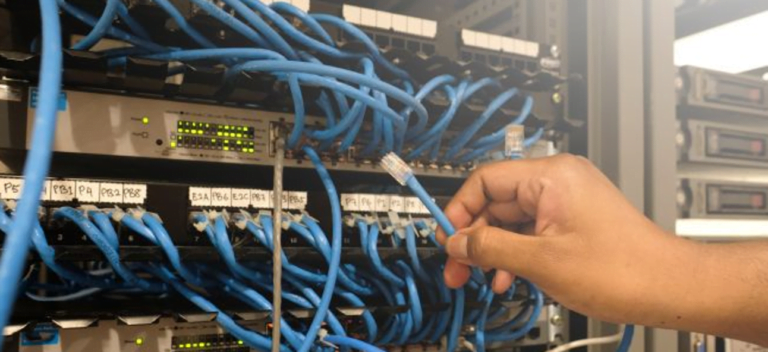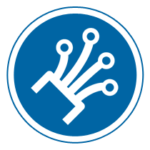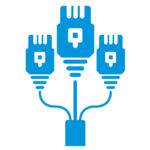- info@unisolcommunications.com
- +91 98800 09520 / +91 98860 03890

Local Area Network
How does a Local Area Network (LAN) work?
A local area network (LAN) is a group of computers and associated devices that share a common communications line or wireless link and typically share the resources of a single processor or server within a small geographic area (for example, within an office building). Usually, the server has applications and data storage that are shared in common by multiple computer users. A local area network may serve as few as two or three users (for example, in a home network) or as many as thousands of users (for example, in an FDDI network).
Local area networks, generally called LANs, are privately-owned networks. They provide a useful way of sharing resources between end users. The resources such as printers, file servers, scanners, and internet are easily shareable among other connected computers in a network.
LANs are distinguished from other kinds of networks by three characteristics:
- Their transmission technology
- Their size
- Their topology
Major local area network technologies are

- Ethernet
- Token Ring
- FDDI (Fiber Distributed Data Interface)
Ethernet is by far the most commonly used LAN technology. A number of corporations use the Token Ring technology. FDDI is sometimes used as a backbone LAN interconnecting Ethernet or Token Ring LANs. Another LAN technology, ARCNET, once the most commonly installed LAN technology, is still used in the industrial automation industry.
Typically, a suite of application programs can be kept on the LAN server. Users who need an application frequently can download it once and then run it from their local hard disk. Users can order printing and other services as needed through applications run on the LAN server. A user can share files with others at the LAN server; read and write access is maintained by a LAN administrator. A LAN server may also be used as a Web server if safeguards are taken to secure internal applications and data from outside access.
In some situations, a wireless LAN may be preferable to a wired LAN because it is cheaper to install and maintain. - LAN TOPOLOGIES Bus Ring Star
- BUS TOPOLOGY Ethernet, is the best example of a network protocol used to connect multiple computers and used by the Internet. It operates at speeds up to 1 Gb/s by using a protocol based on carrier-sense multiple access (CSMA) with collision detection. Successful when coaxial cables are used for the bus , but difficulties arise when optical fibers are used. Limitation: Losses occurring at each tap, which limits the number of users.
- RING TOPOLOGY Consecutive nodes are joined by point-to-point links in closed loop Data transmitted in frames Medium access control is needed to determine when station can insert frame using a token. The use of ring topology for fiber-optic LANs has been commercialized with the standardized interface known as the fiber distributed data interface(FDDI). It operates at100Mbps by using multimode fiber and 1.3µm transmitters based on light-emitting diodes(LEDs). It is designed to provide backbone services such as the interconnection of lower-speed LANs or mainframe computers.
- FDDI (FIBER DISTRIBUTED DATA INTERFACE) Standard for data transmission on fiber optic lines in a LAN that can extend in range up to 200 km (124 miles). Provide backbone services like the interconnection of lower-speed LANs or mainframe computers The FDDI protocol can support thousands of users. An FDDI network contains two token rings, one for possible backup in case the primary ring fails. The primary ring offers up to 100 Mbps capacity. If the secondary ring is not needed for backup, it can also carry data, extending
- STAR TOPOLOGY Each station connected directly to central node Central node can broadcast (hub) Central node can act as frame switch retransmits only to destination today’s technology Classified as Active and Passive star networks: In active-star configuration, incoming optical signals are converted to the electrical domain through optical receivers. In passive star configuration, distribution takes place in the optical domain through devices















